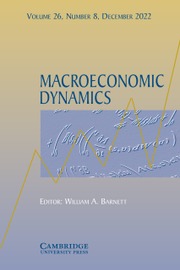No CrossRef data available.
Article contents
Estimation and testing of forecast rationality with many moments
Published online by Cambridge University Press: 08 August 2025
Abstract
We in this paper employ a penalized moment selection procedure to identify valid and relevant moments for estimating and testing forecast rationality within the flexible loss framework proposed by Elliott et al. (2005). We motivate the selection of moments in a high-dimensional setting, outlining the fundamental mechanism of the penalized moment selection procedure and demonstrating its implementation in the context of forecast rationality, particularly in the presence of potentially invalid moment conditions. The selection consistency and asymptotic normality are established under conditions specifically tailored to economic forecasting. Through a series of Monte Carlo simulations, we evaluate the finite sample performance of penalized moment estimation in utilizing available instrument information effectively within both estimation and testing procedures. Additionally, we present an empirical analysis using data from the Survey of Professional Forecasters issued by the Federal Reserve Bank of Philadelphia to illustrate the practical utility of the suggested methodology. The results indicate that the proposed post-selection estimator for forecaster’s attitude performs comparably to the oracle estimator by efficiently incorporating available information. The power of rationality and symmetry tests leveraging penalized moment estimation is substantially enhanced by minimizing the impact of uninformative instruments. For practitioners assessing the rationality of externally generated forecasts, such as those in the Greenbook, the proposed penalized moment selection procedure could offer a robust approach to achieve more efficient estimation outcomes.
Information
- Type
- Articles
- Information
- Copyright
- © The Author(s), 2025. Published by Cambridge University Press

